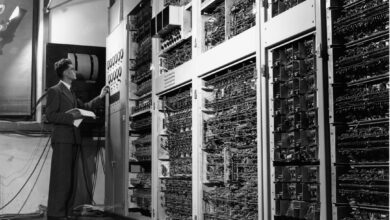The Comprehensive Guide to Metal Mining: Exploration, Extraction, and Sustainable Production Trends in Precious and Industrial Metals

Metal mining plays a crucial role in our modern economy, serving as the backbone for a wide array of industries from construction to aerospace. The journey of metal mining begins with exploration, where geologists meticulously search for deposits of both precious and industrial metals. This exploration leads to the extraction phase, where techniques in metallurgy and advanced technologies come into play to unearth valuable resources like gold, silver, copper, and lithium. As the demand for metals continues to rise, understanding the differences between ferrous and non-ferrous metals becomes increasingly important, as each type serves distinct applications ranging from jewelry to energy storage solutions.
In this article, we will navigate through the multifaceted world of metal mining, exploring the entire process from exploration to sustainable production. We will also delve into the various types of metals, including rare earth metals and base metals, and their significance in today’s markets. Finally, we will examine trends shaping the future of metal mining, such as metal recycling, 3D printing technologies, and sustainable practices that aim to minimize environmental impact while meeting global demands. Join us as we uncover the dynamic landscape of metal commodities and their vital role in our everyday lives.
- 1. The Journey of Metal Mining: From Exploration to Sustainable Production
- 2. Understanding Metal Types: Precious vs. Industrial Metals and Their Applications
- 3. The Future of Metal Mining: Trends in Recycling, 3D Printing, and Sustainable Practices
1. The Journey of Metal Mining: From Exploration to Sustainable Production
The journey of metal mining is a complex process that begins with exploration and leads to the sustainable production of various metals essential for modern society. It encompasses a range of activities, from identifying potential mining sites to extracting valuable resources and ultimately producing metal commodities that meet industry demands.
Exploration is the first step in the metal mining process, where geologists and mining companies utilize advanced techniques to locate deposits of both precious metals, such as gold and platinum, and industrial metals, including steel, aluminum, copper, and zinc. This phase often involves geological surveys, sampling, and drilling to determine the viability of a site for extraction. As demand for rare earth metals and battery metals rises, exploration efforts are increasingly focused on these resources due to their critical role in technology and renewable energy applications.
Once a viable deposit is identified, the extraction phase begins. This process can vary significantly based on the type of metals being mined. Ferrous metals, like iron, are typically extracted through open-pit mining or underground mining methods, while non-ferrous metals, such as copper and aluminum, may require different techniques. The extraction process must also consider environmental impacts, leading to a growing emphasis on sustainable metal production practices. Companies are now adopting methods that minimize waste, reduce energy consumption, and decrease metal corrosion during extraction and processing.
Following extraction, metallurgy plays a crucial role in transforming raw ores into usable metals. This stage involves refining processes that yield base metals and metal alloys suitable for a variety of applications, from construction metals used in infrastructure to aerospace metals required in aircraft manufacturing. Furthermore, the integration of metal recycling into the production cycle enhances sustainability efforts, allowing for the recovery and reuse of valuable materials, which is vital in an era where metal trends lean towards reducing environmental footprints.
Sustainable practices in metal production are becoming increasingly important as industries seek to align with environmental standards and consumer expectations. Innovations in metal fabrication, such as the use of 3D printing metals, are paving the way for more efficient production methods that reduce waste and energy consumption. Additionally, as gold investing and silver investing become more mainstream, the focus on ethical sourcing and responsible mining practices is growing.
In summary, the journey of metal mining from exploration to sustainable production is multi-faceted and dynamic. By embracing advanced technologies, prioritizing environmental stewardship, and adapting to market demands, the metal mining industry is evolving to ensure that it can meet the needs of today while safeguarding the resources for future generations. This ongoing transformation not only supports the global economy but also underpins the development of innovative solutions across various sectors, including automotive, energy, and construction.
2. Understanding Metal Types: Precious vs. Industrial Metals and Their Applications
Understanding the different types of metals is crucial in the context of metal mining and its applications. Metals can be broadly categorized into precious metals and industrial metals, each serving distinct purposes across various industries.
Precious metals, including gold, silver, platinum, and palladium, are valued for their rarity and unique properties. These metals are often associated with investments, such as gold investing and silver investing, and are widely used in jewelry and luxury items due to their aesthetic appeal and resistance to corrosion. Additionally, precious metals play a significant role in technological applications, including electronics and catalytic converters in automotive industries, where their high conductivity and durability are essential.
On the other hand, industrial metals encompass a range of materials that are fundamental to construction and manufacturing. Ferrous metals, such as steel, are known for their strength and are commonly used in construction metals and metal fabrication. Non-ferrous metals like aluminum, copper, zinc, and lithium offer different advantages, such as lightweight properties and resistance to corrosion, making them ideal for aerospace metals, energy metals, and automotive metals.
Base metals, which include copper, aluminum, and zinc, play a critical role in various industrial applications. They are essential in manufacturing metal alloys, which combine different metals to enhance certain properties like strength, ductility, and resistance to corrosion. For instance, steel is an alloy of iron and carbon, widely used in construction and automotive industries.
Emerging trends in metal mining also highlight the importance of rare earth metals and battery metals, which are crucial for innovations in technology and sustainable energy solutions. As the demand for electric vehicles grows, materials such as lithium are becoming increasingly important, emphasizing the need for sustainable metal production practices.
In addition to their primary uses, metals can be recycled, contributing to sustainability within the industry. Metal recycling reduces the need for new metal extraction, thereby minimizing environmental impact and conserving resources. This practice is particularly vital for precious metals and base metals, as recycling can significantly reduce production costs and energy consumption.
As industries evolve, understanding the diverse applications of precious and industrial metals will be essential for navigating metal trends in the future. Innovations such as 3D printing metals are transforming manufacturing processes, making it imperative for stakeholders in metal mining and metallurgy to stay informed and adapt to new technologies.
In summary, distinguishing between precious and industrial metals provides insight into their applications, market dynamics, and the importance of sustainable practices in the ever-evolving landscape of metal mining.
3. The Future of Metal Mining: Trends in Recycling, 3D Printing, and Sustainable Practices
The future of metal mining is poised for significant transformation, driven by emerging trends in recycling, 3D printing, and sustainable practices. As the demand for both precious and industrial metals continues to rise, the industry is adapting to meet the challenges of resource scarcity and environmental concerns.
One major trend is the increased focus on metal recycling. The recycling of ferrous and non-ferrous metals not only minimizes waste but also reduces the need for new metal extraction. With the global push towards sustainability, industries are prioritizing the recycling of base metals like aluminum, copper, and zinc. This shift is critical for sectors such as construction, automotive, and aerospace, where metal commodities play an essential role. By investing in metal recycling technologies, companies can recover valuable materials while minimizing the environmental impact associated with traditional metal mining methods.
In addition to recycling, the advent of 3D printing is revolutionizing the way metals are produced and utilized. 3D printing metals, such as steel and aluminum, allows for more efficient use of materials, reducing waste and energy consumption. This innovative manufacturing process is particularly beneficial for producing complex metal alloys and components used in aerospace and automotive applications. As the technology evolves, we can expect to see a broader adoption of 3D printing across various sectors, leading to enhanced customization and lower production costs.
Moreover, sustainable metal production practices are becoming increasingly important as the world grapples with climate change. Mining companies are now investing in environmentally friendly methods to extract and process metals, including rare earth metals and battery metals like lithium. These practices not only help in reducing metal corrosion and environmental degradation but also align with the growing consumer demand for responsibly sourced materials, especially in jewelry and construction.
As gold investing and silver investing gain traction among investors seeking to diversify their portfolios, the awareness of sustainable practices in metal mining will likely influence purchasing decisions. The integration of these advanced methodologies into the metal mining sector signals a promising shift towards a more sustainable future.
In conclusion, the future of metal mining is being shaped by trends in metal recycling, advancements in 3D printing, and a commitment to sustainable practices. These developments not only enhance the efficiency of metal production but also support the industry's transition towards a more responsible and environmentally friendly approach. As we move forward, the continued focus on these trends will be vital for meeting global metal demands while preserving our planet for future generations.
In conclusion, the journey of metal mining is a multifaceted process that begins with exploration and culminates in sustainable production. As we have explored, the distinction between precious and industrial metals highlights their diverse applications, from jewelry and construction to aerospace and energy sectors. The future of metal mining is shaped by innovative trends such as metal recycling, which not only conserves resources but also reduces environmental impact, and 3D printing, which is set to revolutionize the way we fabricate metal products.
As industries increasingly prioritize sustainable practices, the significance of recycling and responsible sourcing of base metals, ferrous and non-ferrous metals, and rare earth metals is more crucial than ever. The rise of battery metals like lithium and the growing demand for metal commodities like gold and silver for investing purposes emphasize the need for a forward-thinking approach in metallurgy and metal production.
By embracing sustainable metal production methods and exploring new technologies, we can ensure that the metal mining industry not only meets the demands of the present but also safeguards the resources for future generations. As we navigate these metal trends, it is essential for stakeholders in the mining sector to remain committed to innovation and sustainability, paving the way for a more resilient and responsible industry.
Ultimately, whether through metal fabrication for automotive applications or the creation of advanced metal alloys for various industries, the future of metal mining is intertwined with the principles of sustainability and innovation. With a focus on these values, we can ensure that the sector contributes positively to both the economy and the environment.





